If you are tired of making the usual lasagne, or can’t get enough of this dish and want to make more and more variations, here’s one to try. It’s white, very savoury, full of vegetables, and great if you love ricotta, bacon and ham.
What to expect: a rich white ricotta lasagne that’s not your usual lasagna. If you like the flavour of soffritto and ricotta, you’ll really love the combination of the ingredients we are using to make this.
When it comes to lasagna, there’s the classic Italian lasagne, and then there’s a whole world of variations. The classic lasagne, rooted in Italian tradition, typically features layers of pasta, a hearty meaty ragù sauce, and creamy béchamel sauce. It’s a savory, meat-centric delight that’s adored worldwide.
On the other side of the lasagna spectrum, you’ll find numerous exciting variations. One such variation is the ricotta lasagne. Unlike the traditional classic, ricotta lasagne takes a different path, steering away from the meaty ragù and embracing ingredients like bacon and ham, all while introducing the creamy charm of ricotta cheese.
It’s a unique twist that’s not like the lasagna you’re used to. This white ricotta lasagna is all about new flavors. It’s packed with the delicious taste of soffritto and the creamy goodness of ricotta cheese, making it a fantastic and different meal.
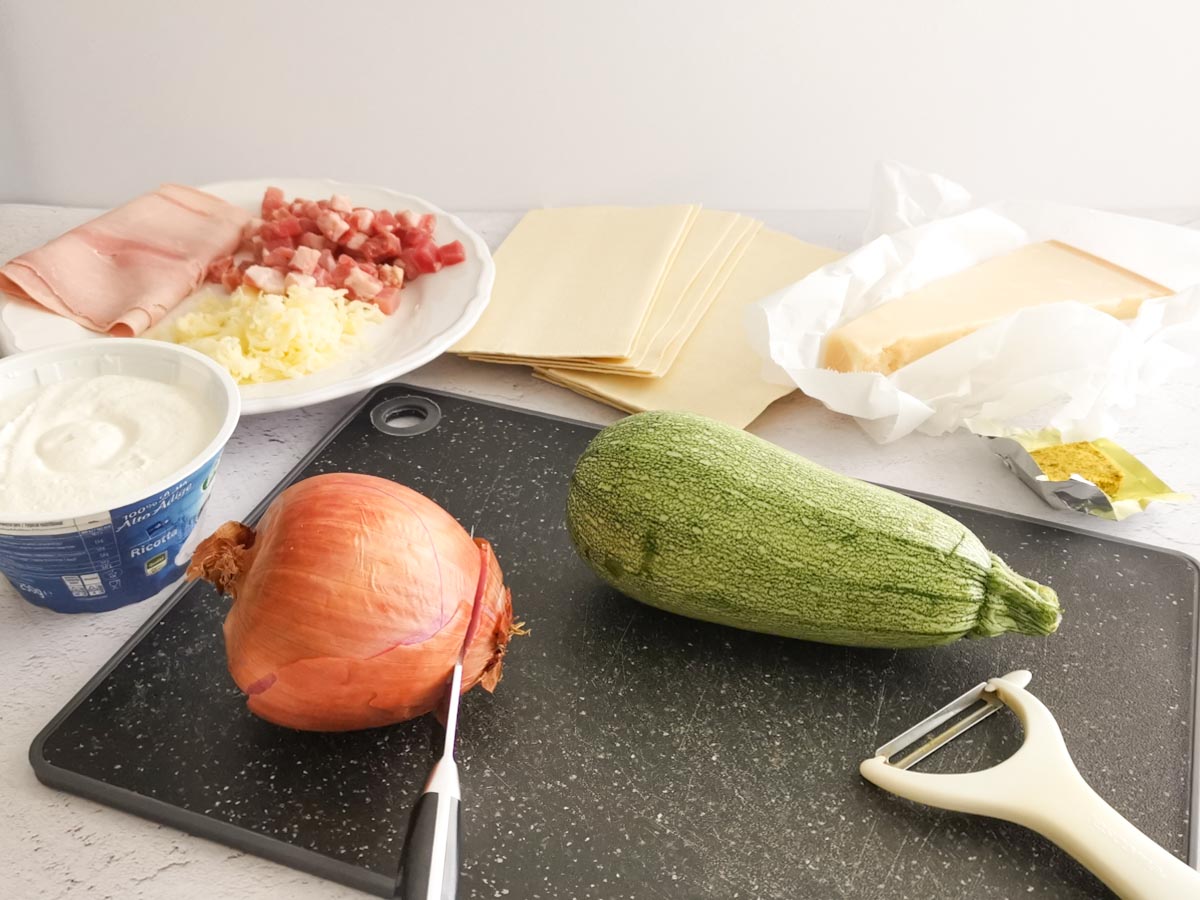
Here’s the recipe—let’s dive in and create some delicious magic together. Join along as I whip up this amazing courgettes and ricotta lasagne, a dish that will surely tickle your taste buds.
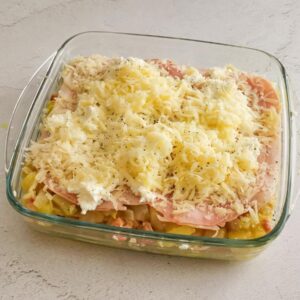


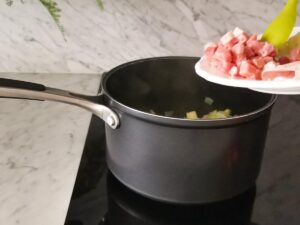

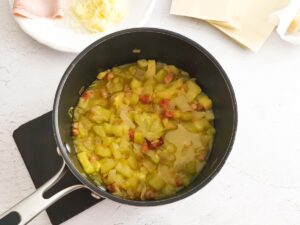
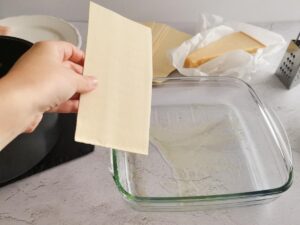




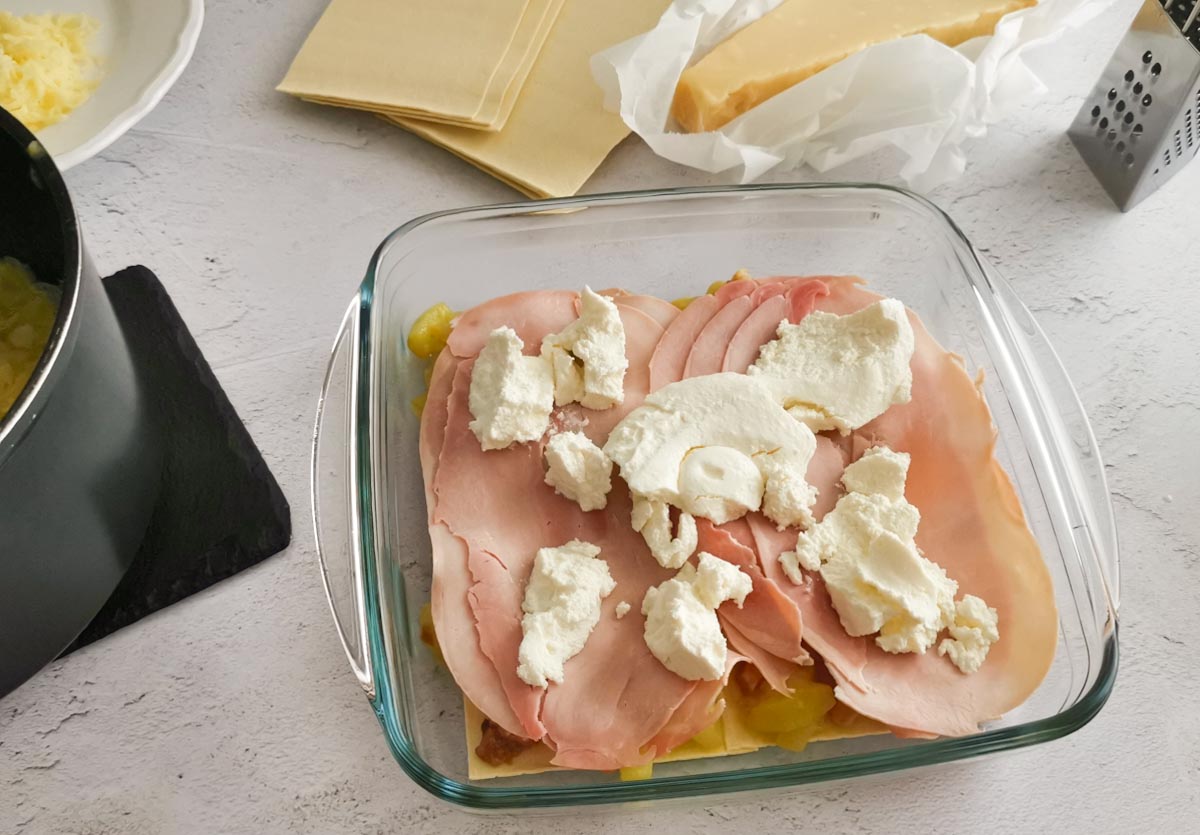
Ricotta cheese is used in lasagna to add creaminess and a slightly tangy flavor to the dish. It complements the other ingredients and adds a distinct texture, making for a delicious, creamy lasagna.
While classic lasagna traditionally uses béchamel sauce, ricotta is often used as a substitute or in addition to béchamel. The choice between the two largely depends on personal preference and regional variations.
Zucchini lasagna can become watery due to the natural moisture content of zucchini. To prevent this, you can try salting and draining the zucchini before using it in the lasagna, or you can cook it separately to remove excess moisture – grilling it before sauteing can help.
Yes, you can substitute ricotta cheese for cottage cheese in lasagna. The choice between the two is often a matter of personal taste, as both can provide a creamy texture to the dish.
Traditional Italian lasagna recipes often include béchamel and Parmesan cheese but not ricotta. However, regional and personal variations may incorporate ricotta for a different flavor profile.
Adding eggs to ricotta in lasagna can help bind the cheese mixture and give it a firmer texture. It’s a common practice in many lasagna recipes, but it’s not strictly necessary.
To prevent zucchini from getting soggy, you can salt the slices and let them sit for a while to draw out excess moisture. Additionally, you can grill or sauté the zucchini before using them in lasagna.
It’s generally recommended to cover lasagna with foil for most of the cooking time to trap heat and moisture, preventing it from drying out. You can remove the foil toward the end of cooking to brown the top.
It’s a good idea to drain excess moisture from ricotta before using it in lasagna to prevent the dish from becoming too watery. You can do this by placing the ricotta in a fine-mesh strainer for a while.
If not properly drained or if it has high moisture content, ricotta cheese can contribute to a watery lasagna. But if you drain it well, your ricotta lasagna should be fine.